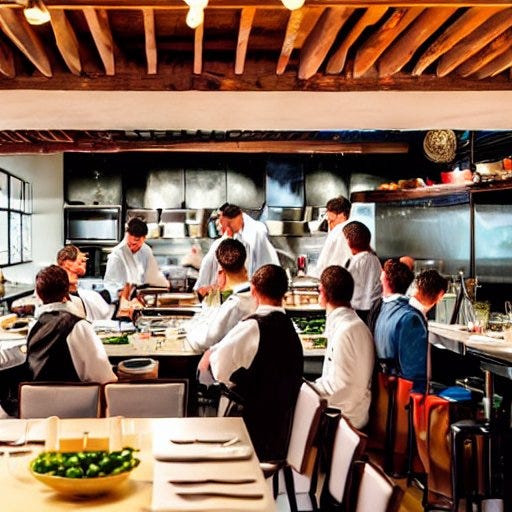
Vol. 1, No. 6 — First off, would you like to know how to pronounce that title? It’s a Basque word, and English pronunciation rules come up a little empty when a T and an X are mashed that close together. Don’t worry, it’s easier than it looks.
The Basque “tx” is identical to the English “ch” and the “oko” part rhymes with Yoko of Beatles fame. Combine them and you get something like “choke-o.” What is a choke-o?
A Txoko is a cooking club. (On second thought, that was an unfortunate way to transliterate the pronunciation above.) More specifically, Txokos are private cooking clubs. They are not open to the public and you need to be a member to cook there or bring any guests. And perhaps the most surprising part? They’re usually only for men.
To my American ear, this does not sound like a high-demand item. I can count the number of male-only private cooking clubs I’ve seen in the US on zero hands, but in Basque Country, they’re everywhere.
One thing you should know about Basque Country is that it is world renowned for its food. It is a major part of the culture. People talk about the meal they’re going to make tomorrow while still enjoying the meal in front of them. It’s also fair game at any point in your day to bring up that one time we made that one staple dish but it turned out perfectly. Remember that? Oh, that was so great. We should make that again.
Food is a big deal here and they like to have a nice place to prepare it when serving a group. This is the role of a Txoko.
While Txokos come in all shapes and sizes, they all have equipment rivaling any restaurant. I have been invited to three or four different Txokos during my time here and would not feel comfortable operating a single appliance in any of them. Maybe the deep freeze is within my realm of expertise but not much else.
Complementing the industrial kitchens, they also are stocked full of non-perishables, soft and hard drinks, wine, and coffee. Members check off what they’ve used on a little clipboard and it’s tallied against their monthly dues.
The dining area is also usually quite nice. Expansive tables with plenty of room, a fancy coffee machine and bar area, and sometimes a pool or ping pong table for the kids. There might be a TV hanging on a wall, but it’s only to watch the New Year’s countdown or perhaps an important sporting event. It’s never just droning on as background fodder.
Txokos are used for all types of meals from your family’s Christmas supper to your soccer team’s monthly get-together, to afternoon coffee with business associates. It’s literally a private restaurant that a dozen club members can timeshare to socialize with their friends and family. You reserve your date and time, bring the food supplies needed, and your guests can gather together in a nice, private space. Whether you’re treating or splitting the bill, no one ends up paying restaurant prices. It makes a lot of sense.
So, back to one peculiarity: why exclusive to men? The simplest answer is that men traditionally do a lot of the cooking in a Basque family, and the first Txokos were founded by groups of men. It took a while to break the status quo and open things up. Women can now be invited as guests of course, but cooking may still be frowned upon.
I have had some of the best meals in my life at Txokos. They are a uniquely Basque fixture and experience. Maybe someday I’ll have the skills to participate in one, but I doubt the entrance exam involves Pop-Tarts and DiGiorno.
Midwestern Europe: Volume 1 with the first 52 entries in this series is available now on Amazon US, Spain, and Germany in hardcover, paperback, and Kindle formats!
They were made with much love. Pick up a copy, you won’t be disappointed.
If you’ve been enjoying these entries, please consider dropping by the product page and leaving a star rating based on what you’ve read here. Your investment of a minute or two would totally make my day! Many thanks.

